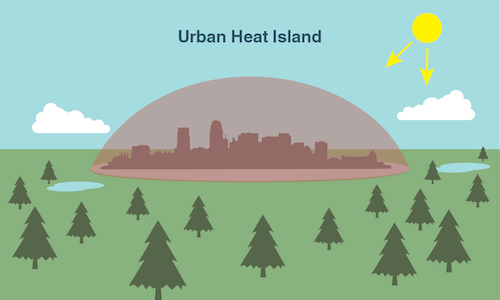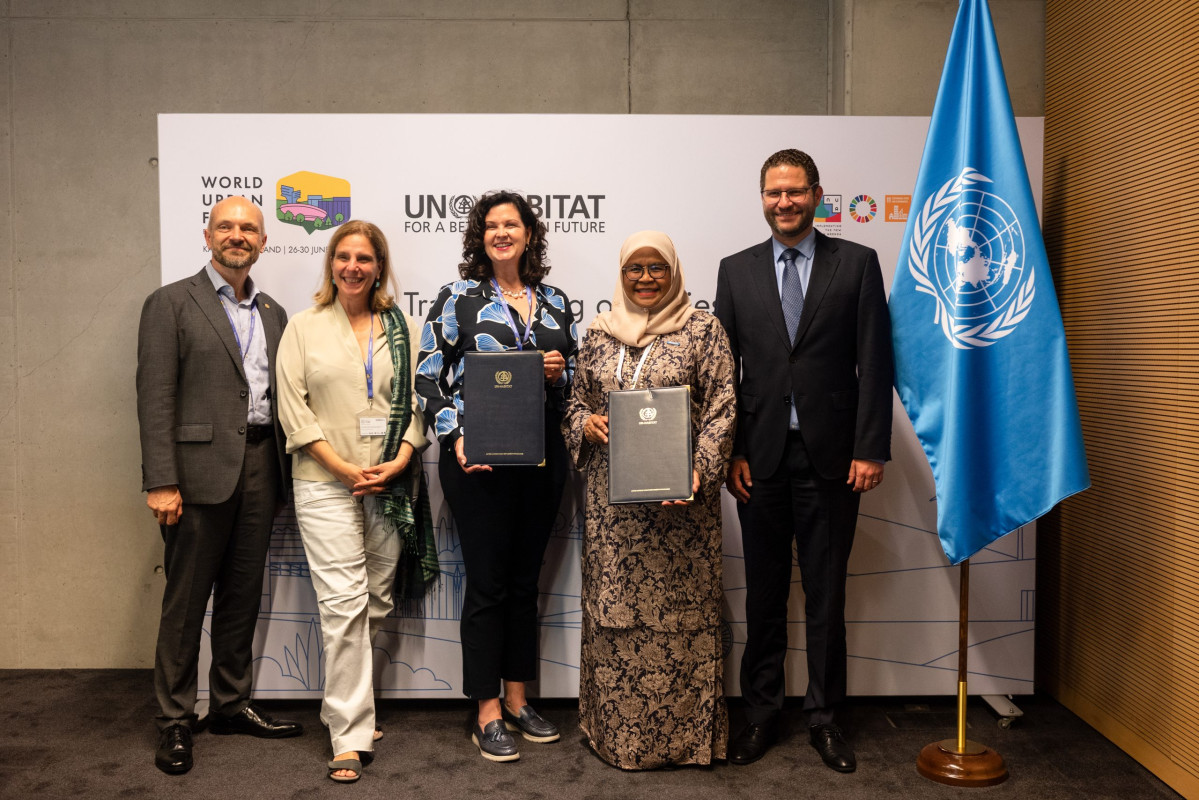 Did you know that last year was Earth’s hottest year on record?
Did you know that last year was Earth’s hottest year on record?
The number of heatwaves each summer has increased significantly due to climate change and global warming, and this issue will most likely get worse in the next few years.
Heatwaves are known as “silent killers” and their impacts are not discussed as much as other natural disasters such as hurricanes or earthquakes.
In the 2022 European heatwave, nearly 70,000 people lost their lives. And between 2000 and 2016, the number of people exposed to heatwaves increased by nearly 125 million!
Let's find out why cities matter and what they are doing to combat heatwaves...
Cities Take The Lead
 Cities are usually affected by heatwaves more than rural areas and tend to have significantly higher temperatures. This is because concrete, buildings and other surfaces absorb and trap heat -- a phenomenon known as the Urban Heat Island (UHI) effect (read more here).
Cities are usually affected by heatwaves more than rural areas and tend to have significantly higher temperatures. This is because concrete, buildings and other surfaces absorb and trap heat -- a phenomenon known as the Urban Heat Island (UHI) effect (read more here).
Since there isn’t much federal legislation in the U.S. to protect residents from the heat, most of the responsibility falls on cities to find innovative solutions.
Oklahoma City recently joined a national project through the National Oceanic and Atmospheric Administration (NOAA) with 14 other cities to map heat waves.
Oklahoma City’s Office of Sustainability and the University of Oklahoma have appointed citizen volunteers to help researchers gather data. The volunteers attach heat and air quality sensors to their cars so that scientists can see which areas are most affected by rising temperatures.
Learning where the city’s heat pockets are is an important first step to finding a solution. In one instance, Oklahoma City scientists realized that the coolest area in the city was a prairie habitat at the Myriad Botanical Gardens, which was around 10 degrees cooler than the rest of the concrete city.
Additionally, NOAA’s Climate Adaptation Planning and Analytics Heat Watch program (CAPA) has helped many other cities figure out what their hottest areas are and what cooling solutions to implement.
Last summer, President Biden announced new measures to help outdoor workers who are vulnerable to heat, increased funding for weather forecasting, and increased water storage in western states, as well as a $1 billion grant to help cities plant trees.
Future Jobs: Heat Officers!
 Several US cities, such as Phoenix, Los Angeles, and Miami, are also starting to appoint Heat Officers whose role is to protect people from the heat.
Several US cities, such as Phoenix, Los Angeles, and Miami, are also starting to appoint Heat Officers whose role is to protect people from the heat.
These officers organize teams to distribute heat packets, set up water stations and cooling centers for the homeless populations, and even help people find housing during heat waves. They also try to find long-term solutions for heat waves, such as planting trees, installing green roofs, and making sure that there are cooling systems in buildings and affordable housing.
The global community is also taking steps to protect citizens from heat waves. Recently, the United Nations appointed Eleni Myrivili as its first-ever global Chief Heat Officer.
Previously, Myrivili was the deputy mayor of Athens, Greece, and helped transform her city to become climate resilient by adding more green spaces and pocket parks, and reducing the need for cars. In her new position, Myrivili is hoping to expand her efforts to the global community and especially help protect poorer cities from the dangers of global warming.
Overall, the rise in global temperatures has been met with innovative solutions and policies at the local, federal, and global levels.
Sources: BBC, NPR, Yale.edu, WHO, WRI









